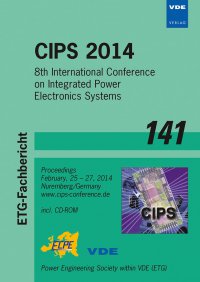Characterization of different wire bonding materials during passive thermal test
Conference: CIPS 2014 - 8th International Conference on Integrated Power Electronics Systems
02/25/2014 - 02/27/2014 at Nuremberg, Germany
Proceedings: CIPS 2014
Pages: 4Language: englishTyp: PDF
Personal VDE Members are entitled to a 10% discount on this title
Authors:
Cosiansi, Fernando (Politecnico di Torino, Torino, Italy)
Mattiuzzo, Emilio; Turnaturi, Marcello (VISHAY Semiconductor Italiana S.P.A, Borgaro Torinese, Italy)
Thomas, Sven; Koetter, Steffen (HERAEUS Materials Technology GmbH & Co.KG, Hanau, Germany)
Abstract:
The role of heavy wire bonding in power modules is very important. They connect different parts within the module with each other, i.e. DBC to DBC, DBC to chip and DBC to frame are joined with bonding wires. They play a significant role in order to improve the overall module performance in terms of reliability and power capability. Therefore, new combinations of materials and technologies are used to produce a better heavy wire bonding, upgrading the mechanical and electrical characteristics properties of the wires. In order to evaluate the reliability, four different types of Al based bonding wire materials (5N-H11, 5N H11-CR, Al-PS and CucorAl 40/60) were compared with respect to temperature cycling capability.


